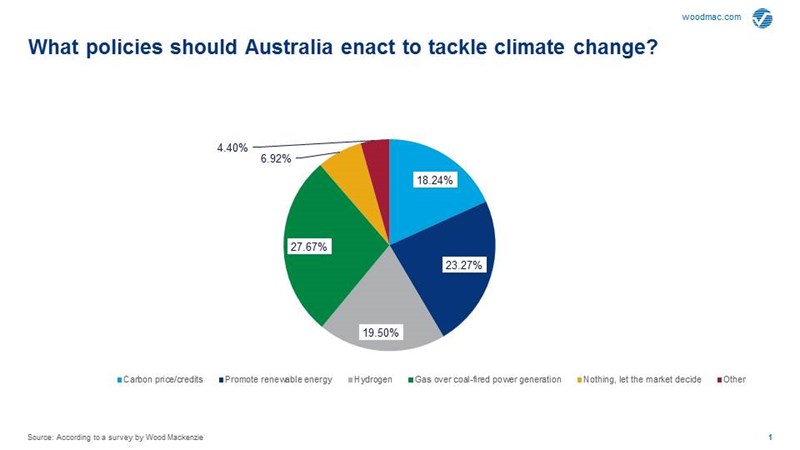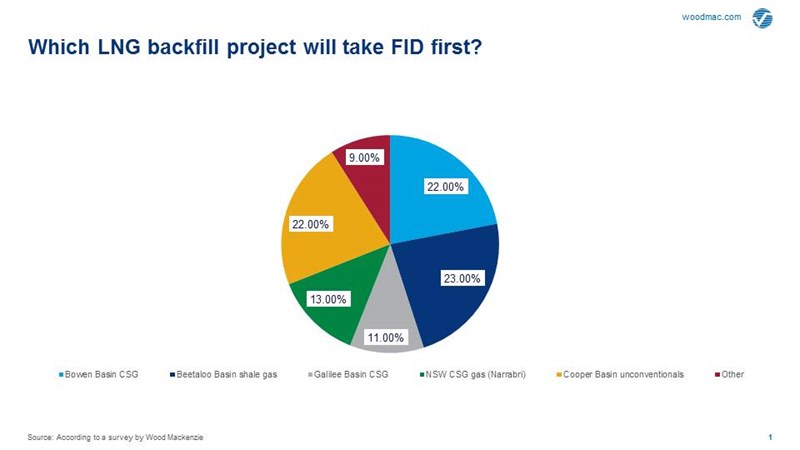与我们分析师联系
Renewables, market intervention and exploration – three themes weighing on Australia upstream players' minds
1 minute read
Adele Long
Head of APAC Upstream

With the theme ‘Navigating the future’, this year's APPEA conference was less focused on current developments and more about what’s coming next.
Having attended many APPEA events in the past, this was the first time renewable energy sources - hydrogen in particular - were put under the spotlight. And with it, came a distinctly different atmosphere at the event. Delegates were interested in opportunities that could come with renewables adoption, while being mindful of some of the existing challenges the industry faces in the upstream regulatory space.
Renewables can benefit the upstream business
One of the hottest topics at APPEA was how to use renewables to benefit an upstream business, rather than replace it. At APPEA, Darwin LNG operator ConocoPhillips said it would be the first LNG facility globally to use batteries to run plant turbines. Similarly, Woodside is installing a 1 MWh lithium-ion battery on its Goodwyn A platform offshore the North West Shelf (NWS) to reduce unused back-up generation capacity. It is also investigating using industrial-scale solar to power the NWS LNG plant. This became a common theme throughout the conference – using new technologies to not only be greener, but also release valuable fuel gas for incremental sales volumes.
At the conference, Wood Mackenzie surveyed over a hundred delegates to find out their views on the hot topics. Given climate change is such a divisive topic in Australia at the moment, we asked participants:
From the number of queries we fielded on hydrogen at the Wood Mackenzie APPEA stand, it became clear that the industry is now beginning to take this 'fringe' fuel very seriously. As we highlighted in our Global trends: what to look for in 2019 insight, this year will see major momentum for a fuel with applications across industry, storage, heating and transport.
But as with many nascent technologies, there are a wide range of competing proponents and processes, none of which has yet emerged as a market winner. But a common message is the complementary nature of the LNG and hydrogen businesses, and the scope for partnerships between Australian producers and Asian users. With the Australian government actively looking to support the sector, the country has the potential to be a market leader in hydrogen supply.
Market intervention will continue
It was unsurprising that government intervention was a strong theme of the conference from the start. The message from industry was clear - it just wants to get on with what it does best - exploring, producing and operating oil, gas and LNG projects, but in a stable environment.
In recent years the industry has been hit with a number of mechanisms and moratoria, the most notable being the Australian Domestic Market Security Mechanism (ADGSM), a permanent export control trigger. Both the Federal Resources Minister, Matt Canavan, and the ACCC were clear that the ADGSM has done what it was designed to do - softening east coast gas prices as more gas was supplied to the domestic market.
But while there was some positive sentiment from Santos towards the effectiveness of Western Australia's domestic gas reservation policy and its ability to ensure that LNG projects deliver gas to domestic Australia. There was also caution over the impact on investment decisions of reservation policies from IOCs such as ExxonMobil.
The uncertainty over long term gas supply on the east coast of Australia means that government intervention in the market is unlikely to abate any time soon. E&P operators will continue to face uncertainty over how government policy or inaction will impact investment decisions.
So what will the next source of east coast gas supply be? We asked APPEA delegates their views on LNG imports and future upstream supply sources:
Confidence is returning to the exploration sector
Exploration is always a strong theme of APPEA. This year, we saw a degree of confidence returning to the exploration sector.
New Zealand is particularly interesting. The government’s offshore licensing moratorium implemented in 2018, had led many to write off the exploration potential of the country. But with a number of offshore wells planned over the next two years, things are heating up. Tamarind and OMV are companies to watch with drilling around the producing Tui and Maui fields in the Taranaki basin, and a possible frontier exploration well in the Great South Basin.
Back in Australia smaller players are looking for capital to advance oil and gas opportunities, both onshore and offshore. Unsurprisingly, opportunities were being hawked on the fringes of western Australia's Bedout basin, home to the recently appraised, Dorado field. Onshore western Australia gas prospects in the Perth basin were also up for grabs, following in the footsteps of the breakout 2014 Waitsia gas discovery.
Bight Petroleum and others are looking for partners to help fund high-risk exploration in the Great Australian Bight, probably the last big hope for whale-sized oil discoveries offshore Australia. This is likely to be a hard sell as Equinor’s Stromlo-1 well is facing severe head-winds in its bid to get environmental approval. The Bight is a very ecologically sensitive area, and NGOs are lobbying hard against any exploration plans.








